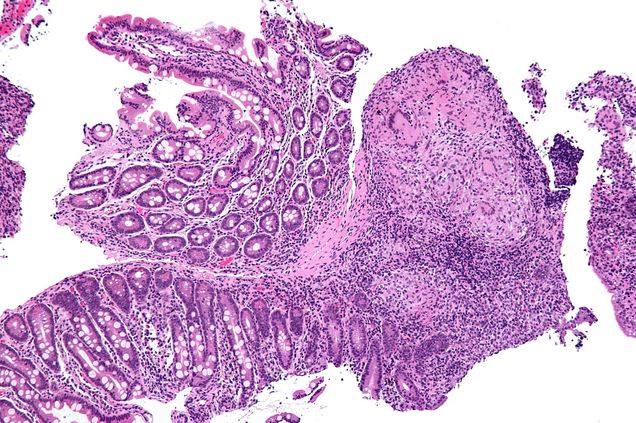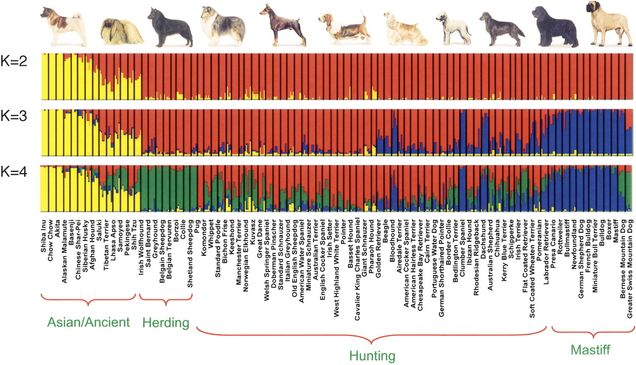Category: Categories
Needing Fixing
Promoting resilience in pediatric autoimmune diseases.
Half of all Americans will deal with a chronic illness in their lifetime.1 This overwhelming statistic is curiously a little-known fact, with chronic illnesses rarely discussed and poorly understood by those who do not suffer from disease. Twenty percent of the American population suffers from an autoimmune chronic illness, including Crohn’s disease, arthritis, asthma, and lupus.
Autoimmune diseases generally begin in early adolescence and develop a cyclic pattern of active disease, or ‘flares’, and remission. In these types of conditions, the immune system is stimulated unnecessarily by an unknown cause and perceives an individual’s organ or organ system as a pathogen, attaching and destroying normal tissue as if it were a disease-causing bacteria or virus.
Since many of these disorders begin in youth, both physiological and psychological treatments are critical to ensuring overall health. Most autoimmune diseases are invisible from the exterior; it is nearly impossible to discern if a person is ill from their physical appearance alone. Therefore, people with autoimmune illnesses often fight to legitimize their diseases, whether it is to a doctor, professor, or a peer who cannot ‘see’ the problem. Although autoimmune diseases are typically not terminal, the severity and uncertainty associated with their prognosis often goes unrecognized due to the lack of physicality associated with the disease and the severe limitation of awareness surrounding such illnesses.
Children are a fascinating subset of this population, for patients with pediatric autoimmune diseases prove to be both the center of the care and somehow also the individual with the least amount of control. Yet, once the child transitions to adulthood, they are expected to advocate for themselves despite the fact that they have not been engaged in their healthcare and are offered no coping skills.
Family Matters

The FAAR program provides guidance for family interactions involving children with autoimmune diseases.
The inevitable involvement of the patient’s parents and siblings can act as a catalyst for behavioral problems of the family’s own, namely depression, social isolation, anxiety, and jealousy. Siblings can easily become jealous of the attention the parents or other authority figures in their lives give to the ill child, and the amount of family time that is concentrated on his or her medical care. The optimal family situation provides comfort and openness in discussing the child’s disorder, while maintaining both the child and family’s identity. University of Minnesota Professor Joan Patterson’s Family Adjustment and Adaptation Response (FAAR) Model holistically captures this idea within nine basic criteria.2
1) The family must balance the child’s illness with the family needs and interests of other family members.
2) Parents should maintain clear family boundaries between themselves and their children in regards to discipline, bed times, and household chores.
3) Parents and their children can develop communication competence by ensuring that the child understands important medical information that pertains to them. Through modeling effective communication competence, parents will be able to instill in their children the ability respond to others’ needs and with the appropriate words or actions.
4) The family should try to attribute positive meaning to their situation by focusing on newfound responsibilities instead of their fear of the disease itself.
5) Parents should demonstrate flexibility by allotting as much time to family activities (like a sporting game) as to medical obligations. A child whose family is able to ‘go with the flow’ will experience life as a “normal kid” as opposed to a young adult dealing with an illness.
6) Parents must commit to the family as a unit, remaining a “Mom and Dad” as opposed to separating the sick child from his or her caregivers.
7) The family can engage in active coping skills, including modeling positive ways to deal with stress aloud, using realistic thoughts, employing muscle relaxation techniques, and healthy sleep patterns.
8) The family must maintain social integration within their own household and the neighborhood/community.
9) The family needs to develop collaborative relationships with professionals, including doctors, in order to make decision that is satisfactory to everyone involved in the child’s care, especially the patient. This is a key factor to the child’s immediate and long-term success. The medical professional relationship leaves much to be desired in terms of listening to the child’s needs and wishes. Establishing a collaborative relationship builds a safe relationship where a child can express their desires and fears of their treatments to choose the best therapy.
While the FAAR model holds great potential to engage an entire family affected by chronic illness in order for it to be as successful as possible, it mostly is maintained as a theory and not necessarily as a treatment protocol. However, the best implementation would be giving the parents the guidelines to this model and having an initial therapy session to initiate the practice. As simple as it seems, the most effective behavior is openness between parents and children, while maintaining the boundaries of parent and child, to ensure that each child gets equal treatment and attention by the parents. This behavior exhibited by the parents is expected to be mirrored by the children, thus eliminating further stress and issues such as sibling jealousy.
Think About It
Interestingly, the most important indicator of a patient’s prognosis is not the diagnosis, but rather the individual’s innate attitude. This attitude derives mainly from how the child feels about the disease without any outside influence, but parents and/or other important figures’ reactions play a huge role in how a child internalizes their ailment. For example, a patient diagnosed with mild asthma who is deeply in denial and very depressed has a poorer prognosis and quality of life than a patient with severe asthma who has a positive outlook. The evidence indicates not only the mind exacerbating physical symptoms, but also a strong interplay between stress and immune functioning. Factors such as a positive attitude, an effective social community, and cognitive behavioral stress management strategies are consistently linked to better immune functioning. Conversely, chronic psychological stress, fear before surgery, and coping strategies of denial or loss of control are associated with poorer immune functioning. It deserves to be stressed that the relevance to the pediatric population is that children have not yet had the natural – or facilitated – opportunity to develop successful coping strategies and social support of their own. Thus, such a system that accommodated for the unique position of this population has the potential to optimize their care and success.
Children with chronic autoimmune illnesses face a unique battle. In many ways, they are as not fully autonomous or even aware of what is coming due to their present stage in life. Children do not always understand the extent of their illness as easily as they can perceive that they are “different” from their peers.3The chronic cyclic nature of an autoimmune disease comes at the cost of a child’s education, as severe symptoms may force the child to miss school or even be hospitalized. Diseases such as Crohn’s, which requires a child to make frequent emergency trips to the bathroom, may not only become emotionally embarrassing, but functionally problematic during school or other activities. These children appear in the center of their medical world as both a dependent third party and the one to endure the treatment. In addition to the power that is stripped from them by their diseases, these children must face the struggles of daily life and peer groups who are rarely empathetic to their plight.
All Together Now
“The FAAR model should provide great support for the ill child and the family.In many ways, fragments of the FAAR model have already been implemented within family relationships. Cognitive Behavioral Therapy (CBT) is often the first therapy used to readjust a person’s thinking into a more adaptive style to interact with the world and their emotions in a more relaxed manner. It employs ‘realistic thinking’ to help the individual see what will most likely happen instead of the improbable anxieties the person presents in therapy. In a disease like arthritis that often requires physical therapy, this is often done in a group format. The proposed therapy works like a group CBT arrangement, aiming to address the importance of social support with peers and the optimal cognitive style, coping skills, and stress management. Within the family setting, the use of the FAAR model should provide great support for the ill child and the family at large. On the side of the medical professionals, it is critical to the process for education about using child-friendly language and helping to preserve the childhood of their patients.
Although children with autoimmune diseases generally end up living different lives than their peers, at the heart of their care needs to be a reminder that they are indeed children and every opportunity should be made available to them. Providing children with CBT and coping strategies coupled with the FAAR intervention, their healthcare can be optimized to foster and sustain their resilience as they develop and face new and challenging medical situations. While no family dreams of having a child with a chronic illness, just because their life is not ideal, does not mean it cannot be a beautiful one.
References
1American Autoimmune and Related Diseases Association, Inc.
2Patterson, J. M. (2002). Understanding Family Resilience. Journal of Clinical Psychology, 58(3), 233-246.
3Patterson, J., & Brown, R. W. (1996). Risk and Resilience among Children and Youth with Disabilities.Archives of Pediatrics & Adolescent Medicine, 150, 692-698.
Doggy Genes
Dogs are “man’s best friends,” but do we know about their origins?
Dogs have been beside us for thousands of years, but until very recently, little was known about both their genetic origins and their domestication process. Researchers around the world have been investigating dog genes from mitochondrial DNA (mtDNA), to compile complete genomes. The research has also given important insight towards the origin of the first dogs and the specific genes that cause diseases that both humans and dogs share, such as diabetes.
The Origin of Species
Until canine gene research began, many people assumed that dogs were close descendants of wolves that were domesticated by primitive humans to aid in hunting about 15,000 years ago.1 Through gene research, scientists have been able to clearly prove that dogs are, in fact, straight descendants of the grey wolf (Canis lupus), and were domesticated as early as 45,000 to 135,000 thousand years ago. The domestication process of dogs began from separate and distinct populations throughout East Asia, which then interbred and backcrossed. Backcrossing, the breeding between an individual with its parents or siblings, allowed generations to develop homogenetic breeds. Researchers distinguished four maternal clades, or matriarchal lines, according to genetic differences. Each clade indicates the particular origin of a breed or group of breeds based on the breed’s genetic background, specifically the genetic of mtDNA. The largest and first clade holds the genes of most known breeds, further supporting the fact that dogs may have been domesticated prior to the dates that archeological records indicate. The other three clades were formed afterwards and encompass more specific and unique dog breeds. However, each clade gives insight into the original maternal lineage of modern dog breeds.2
Custom-Made Companions
Dogs are one of the first examples of human manipulation of nature. Primitive humans initiated the evolution of dogs by breeding specific phenotypes of wolves, even without our modern knowledge of genetics. Through selection against genes for aggression and other traits predominant in wolves, the first domesticated generation of “dogs” began an evolutionary change. Subsequent generations had less harsh or menacing features; limbs and bone structure became smaller and new traits such as barking, a unique trait that is distinct from a howl because of tone and pitch, emerged.1 Dog breeds were then created by humans who wanted a specific kind of dog: a herder, a hunter, a guard, or a guide. Scientists have determined that specific dog breeds developed because of controlled breeding and possibly pre-natal modifications, although the real mechanics of how dog breeds specifically emerged are still unknown. Through very close and controlled breeding, different breeds continued to evolve. Tracing the lineage of each specific modern breed is complicated, however, because mtDNA can only show the mutations that occurred in the early stages of domestication. Any modifications of genes found in mtDNA are those that occurred prior to the creation of modern breeds. In other words, the full extent of gene modification in modern breeds is still very much unknown and is currently being researched.2
To determine the lineage of individual breeds, loci research, which is based on the location of genes on chromosomes, has to be implemented. Loci research detects the genetic changes that might have occurred because of a genetic drift, of movement of a gene from one chromosome to another.2 This allows researchers to see divergence in allele frequencies and distinguish between breeds. Further research on loci has shown that dog breeds can be clustered by ancestry. Several clusters have already been determined: K2 includes all breeds of Asian origin, such as the Akita and the Shar Pei; K3 includes mastiff-type dogs, such as the Bulldog and the Boxer; and K4 includes working-type dogs and hunting breeds, such as the Collie and the Sheepdog.2
Mapping the Genome
Early research began in the late 1990s, but advances were minimal because genetic research was predominantly focused on humans and mice. By 2004, however, scientists had created a fully integrated radiation hybrid map of a dog genome. An integrated hybrid map is a genome map made from DNA fragments which are divided through radiation. These fragments are then synthetically injected and reproduced inside a hybrid cell made from the DNA of two individual species.2 This allowed further research initiatives to identify specific breed genomes and to create a comparative map between human and dog genes. In 2005, the largest canine sequence, the Boxer genome, was made public. It revealed that dog genes replicate at lower rates than humans and the deletions or insertions of nucleotide bases are rare. Following this discovery, mapping of other breeds became easier because similar sequences, certain genes that are linked together, divide dogs into two groups with similar gene structures. One group probably developed from the first domestication and the second from specific breeding. Therefore genome-wide association mapping can be used for later construction of breed genomes.2
Benefits of Canine Genome Research
Because the canine genome has fewer reported genes than the human genome, and is more primitive in content, it allows for an easier insight into disorders present in both human and dogs, such as cancer, diabetes and narcolepsy. Diseases linked to specific dog genes and loci can help identify similarly linked genes in humans. This advancement allows human biologist to identify the mechanisms that may cause certain diseases, and to identify the interaction between genes and their effects on diseases. For example, the discovery of the gene that targets narcolepsy on dogs has indicated how certain genes in the human body relate to our sleep patterns and disorders. It has also opened a new approach to cancer research. By identifying the sources, origins, and developments of cancer and tumors in dogs through canine genes, researchers may understand the predisposition and susceptibility of genes to cancer.
References
1 Dogs Decoded: Nova. Dir. Dan Childs. Nova, 2010. Film.
2 Ostrander, E. & R. W. (2005): The canine genome: genome research. 15: 1706-1716. Web. <http://genome.cshlp.org/content/15/12/1706.full>.
Tagged as: DNA, canine, breeding, genome
Bearing the Cold
Many large carnivores, like bears, don’t actually "hibernate". More
It’s “All In the Bag”
Ways to support new ostomy patients may reduce post-operative body image issues. More
The Science of Sunless Tanning
Aren't you glad I didn’t get a real tan? More
Time For Change?
Pollution has had an unexpected effect on natural evolution. More
Kindergarten Has It Right
Why nap time should be a part of your daily schedule. More
Nanoviricides: A New Hero in Antiviral Science
Revolutionizing the archaic vaccine system. More
Earworms: The Song Stuck in Your Head
What goes in one ear doesn't come out the other. More
California Grunions
A fish out of water. More






